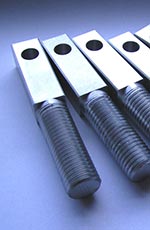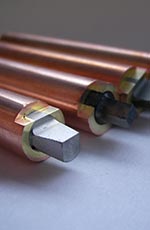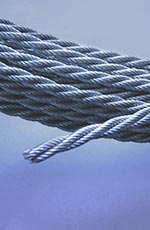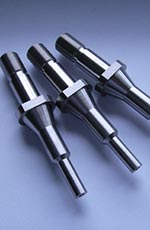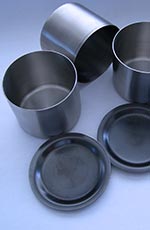Zirconium (Zr)
The name Zirconium originates from the mineral Zircon. Significant resources can be found in Australia, the US and Brazil. Zirconium is a silvery shiny ductile metal and features a good deformability especially through rolling and forging. Due to the formation of a stable oxide layer Zirconium has an excellent corrosion resistance. Zirconium usually contains a few percent of the similar element Hafnium. The production of hafnium-free Zirconium is very complex but necessary for applications in nuclear technology.Significant Characteristics and Applications:
- very good corrosion resistance
- small neutron capture cross section for nuclear technology
- good machinability
- high ductility, good workability
- good weldability
Used for tank tubing, piping and heat exchanger for the chemical industry, cladding tubes for fuels in nuclear technology, instruments for the medical technology, additives for the steel production and others.
Important Alloys:
Zr702 – Unalloyed Zirconium (R60702)
Zr704 – Zirconium-Tin Alloy (R60704)
Zr705 – Zirconium-Niobium Alloy (R60705)
ASTM Standard Specifications:
ASTM B350 (Zirconium and Zirconium Alloy Ingots for Nuclear Application)
ASTM B351/B351M (Hot Rolled and Cold Finished Zirconium and Zirconium Alloy Bars, Rod and Wire for Nuclear Application)
ASTM B352/B352M (Zirconium and Zirconium Alloy Sheet, Strip and Plate for Nuclear Application)
ASTM B353/B5353M (Wrought Zirconium and Zirconium Alloy Welded Tubes for Nuclear Service (Except Nuclear Fuel Cladding)
ASTM B550/B550M (Zirconium and Zirconium Alloy Bar and Wire)
ASTM B551/B551M (Zirconium and Zirconium Alloy Strip, Sheet and Plate)
ASTM B553/B553M (Seamless and Welded Zirconium and Zirconium Alloy Tubes)
Range of Products:
Rods, wires, plates, foils and sheets, tubes, sputtering targets, standard fabricated parts (screws, nuts and others), finished parts according to drawings.
Zr702 – Unalloyed Zirconium (R60702)
Zr704 – Zirconium-Tin Alloy (R60704)
Zr705 – Zirconium-Niobium Alloy (R60705)
ASTM Standard Specifications:
ASTM B350 (Zirconium and Zirconium Alloy Ingots for Nuclear Application)
ASTM B351/B351M (Hot Rolled and Cold Finished Zirconium and Zirconium Alloy Bars, Rod and Wire for Nuclear Application)
ASTM B352/B352M (Zirconium and Zirconium Alloy Sheet, Strip and Plate for Nuclear Application)
ASTM B353/B5353M (Wrought Zirconium and Zirconium Alloy Welded Tubes for Nuclear Service (Except Nuclear Fuel Cladding)
ASTM B550/B550M (Zirconium and Zirconium Alloy Bar and Wire)
ASTM B551/B551M (Zirconium and Zirconium Alloy Strip, Sheet and Plate)
ASTM B553/B553M (Seamless and Welded Zirconium and Zirconium Alloy Tubes)
Range of Products:
Rods, wires, plates, foils and sheets, tubes, sputtering targets, standard fabricated parts (screws, nuts and others), finished parts according to drawings.



